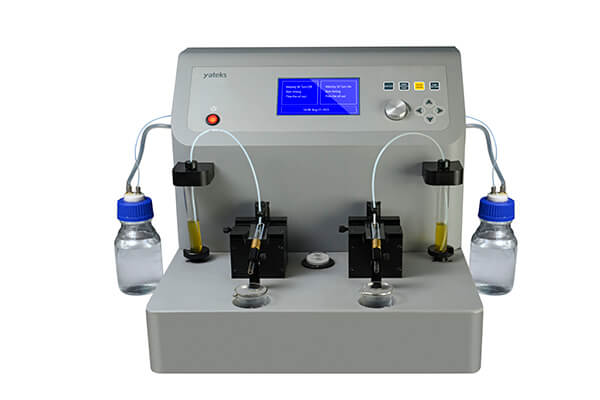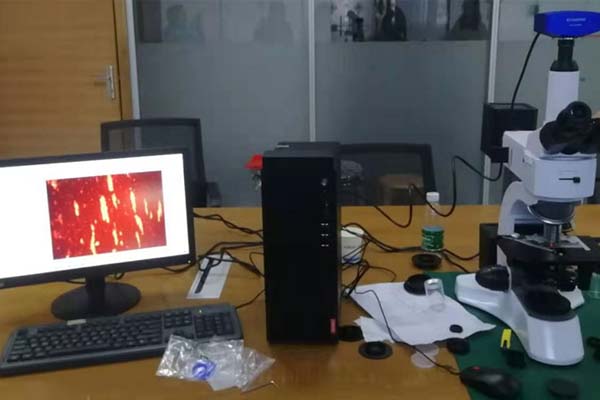一、Working principle
Useing a high gradient strong magnetic field to separate ferromagnetic and paramagnetic wear particles from the machine lubricating oil, and deposit them on the ferrogram in the order of particle size. Then the shape, composition (element), size and number of wear particles can be observed and analyzed with YX-4 Ferroscope (or other brand of ferrographic analysis microscope), so as to diagnose the running state and failure of the tested equipment.
二、Advantage
Can diagnose the wear condition (type of wear, degree of wear, wear part) of the surface of the friction, just through the microscopic analysis of the shape, size, number and composition of the metal wear particles.
Features of FX-4 Ferrogscope — Complies with ASTM D7684
(1)Halogen light source
(2)It consists of reflective light source, transmitted light source, stage, CCD, etc. Because of the reflected light source and the transmitted light source, it is also called a two-light path microscope.
(3) Magnification: 10X, 20X, 40X, 100X
(4) The reflected light source and the transmitted light source can be used at the same time or separately, and their light intensity can be adjusted separately.
Ferrographic software management system
The built-in wear particle analysis software provides a database to help users make better analysis and judgment.
三、Features
(1)Cost-effective, durable
(2)240 * 128 Industrial grade LCD display
(3)Unique 99-level adjustable flow rate control by a knob + press buttons, easy rate adjustment
(4)Two samples can be prepared at the same time independently to improve the efficiency
(5)No restrictions on the type of lubricant to be monitored
四:Application
Ferrograph is cost-effective, can be applied to the analysis and diagnosis of the wear condition of different mechanical equipments, e.g, to inspect the wear condition of the internal combustion engines, gas turbines, gearboxes, bearings, hydraulic systems, etc.
To know the parts of the machine where abnormal wear occurs, by means of the of the wear particle composition (element).
五、Tips of for YTF-8 Dual slide analytical ferrograph
- Keep the instrument in a horizontal position (check the bubble level).
- Make sure that the connection between the oil sample test tube and the oil tube is sealed, otherwise the oil flow will not be smooth /constant.
- Make sure that the connection between the reagent bottle and the oil tube and air pressure tube is sealed.
- Make sure the ferrographic slide is placed correctly–(Note:the white mark is in the lower left corner of the ferrographic slide)
- Flow rate: It is recommended to adjust the speed to 005 and the oil pressure to 2.2Kpa. If the speed is too fast, the oil may spill out of the ferrographic slide and flow onto the instrument, resulting in the failure of the ferrogram preparation.
- The oil flowing onto the instrument needs to be cleaned immediately, otherwise it will corrode the instrument.
- When the viscosity of oil is high, it should be diluted with reagent. Oil sample: tetrachloroethylene = 3ml:1ml
- When there are too many particles, it should be diluted with new oil. Oil sample: new oil = 9:1 or 19:1
- Heat the oil sample in an oven at 65°C for 30 minutes, which reduces the viscosity and allows the oil to mix well with the particles as well.
- The oil sample must be shaken well before preparing a ferrogram.
- Clean the ferrogram with tetrachloroethylene. Natural drying ferrogram.
- Carefully take out the ferrogram vertically upwards.
- The ferroscope for observing the ferrogram is a dedicated dual-light path microscope.


